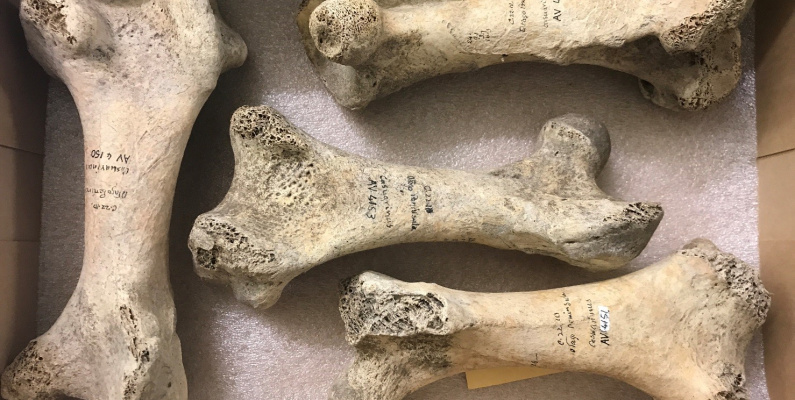
To celebrate International Museum Day 2017, we take a look behind the scenes at the Otago Museum to see what a random day in the office looks like. Thanks to Emma Burns, Curator Natural Science, for sharing a snapshot of her working day.
8am: Today starts with a coffee, emails and a steady stream of “Mōrena” greetings between collection colleagues as they arrive in the office. A quick scan of the day’s news and journal alerts: the oldest known fossil ancestor of baleen whales has been described; locally in Dunedin, whales are being found consistently year-round along Otago’s offshore canyon sites; and the Natural History Collection Management Group is discussing open-source barcode recognition software for collection audit photos.
9am: Urgent tasks – check DCC Matariki coordinator gets all the promotions they need for the events organised as part of Ahi Pepe MothNet event next month.
10am: Follow-ups from debriefs – tweak notes for a lunchtime talk co-delivered to the Friends of the Otago Museum with our Humanities Curator on the donation process, including the types of objects that are accepted into the collection and reasons others are declined.
10.10am: A member of the public brings in a deceased kererū to deposit in the freezer, as allowed for under the Museum’s permit to hold deceased wildlife. The use of taoka species like kererū is administered by Komiti Taoka Tuku Iho.

Found deceased, a kererū deposited at the Museum. Stored frozen for cultural and research requests | Otago Museum
11am: Ongoing work with environmental historian Jonathan West on imagery for his upcoming book. Jonathan is looking for items that relate to some of the stories, animals and people of the Otago Peninsula. I search the collection database (Vernon CMS) for moa bones relating to Octavius Harwood and his family, whose story Jonathan is keen to feature. Unfortunately none have yet been imaged yet so will need to find an appropriate specimen and have it photographed.

Moa femur bones from Otago Peninsula donated by Lucy Ann Harwood, daughter of Octavius Harwood | Otago Museum
12pm: Return to desk. Smash out a quick bit of admin – review and approve order form payments for various things purchased over the last month.
12.30pm: Lunchtime – 2 minute noodles and the ODT quiz.
1pm: Check emails again. Quick exchange with the Emerging Museum Professionals representatives up north about what’s expected in chairing a future leadership workshop being held this weekend. The EMPNZ: Huakina kicks off the wider Museums Aotearoa conference in Palmerston North next week.
1.30pm: Work on internal revisions of the compiled draft of the new collection development strategy – a document every museum should have and review regularly. The Otago Museum’s is reviewed every five years to ensure that the Museum is adding items to the collection in a prioritised manner by assessing the collection’s known strengths, gaps and available resources.
3pm: Quick coffee catch-up with Dr Nic Rawlence from the University of Otago’s Zoology Department following his research after accessing the collection to collect DNA samples from the skeletal remains of black swans.
3.30pm: Research – I add some expert advice notes on the Haast’s eagle skeleton to a draft document, together with some references stumbled across over the weekend. I am working to build a detailed timeline of this significant specimen’s articulation history to add to its record, and form the basis for a proposal for conservation treatment and correction of the eagle skeleton’s posture.

A few issues of accuracy with the Haast’s eagle skeleton | Otago Museum
4pm: Touch base on our support projects for Ahi Pepe MothNet – content coordination as the artists for the Aihuka Art Auction submit biographies and images of their work.

Data in multiple forms – physical collections, field note pages and transcribed electronic data sheets | Brian Patrick and Otago Museum
We have also had a team of local volunteers transcribing field notes covering 30 years, kept by Brian Patrick. This additional information enriches the moth research collection of around 20,000 specimens deposited by Brian in the mid 2000s. We are at the stage where Brian has received some of the completed transcriptions for checking. It is a luxury to be working with donors who are alive to confirm accuracy of these types of supporting data.
5.30pm: Catch a ride home, walk the dog, cook dinner and phone family – normal life stuff.
